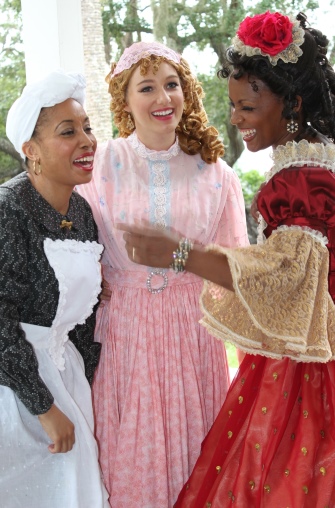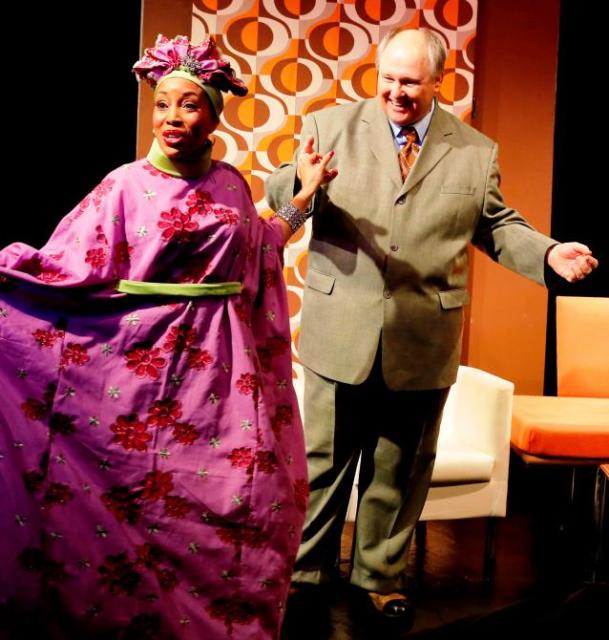

Hollywood 1933 isn’t a place where Negro actors thrived. As Lynn Nottage points out, Vera Stark typically works as maid to Gloria Mitchell, a Mary Pickford-like “Sweetheart” who privately drinks, smokes, and has to work up to posing for her public. She’s also working on a prominent director to make her the star of a Selznick-type epic, “The Belle of New Orleans.” Vera wants to play her maid, one of the few roles open to a black woman, but that can be made more than the popular stereotype.
Beatrice Fletcher-Miller’s Vera is so bright and emotive that it’s no wonder Kristopher Geddie, as director Van Oster’s Man Friday but really a jazz trumpeter and would-be composer, flirts with her. Vera’s two roommates typify how blacks both personally and professionally doubled their roles.
Best friend Andrea Dictor gives a vivacious interpretation of Lottie. With college credentials and credits for her performances in musicals and interpretation of Juliet, she has to get by in server’s gigs. Lisa Willis Richardson’s sultry Anna Mae passes as a South American bombshell and mainly at, between, and after parties.
The focus of By the Way, Meet Vera Stark blurs when playwright Nottage ventures into the pre-production problems of self-censorship. Director Van Oster (Jerry Zezas) insists on having real Negroes reacting painfully to their situation in a real New Orleans brothel. In contrast, producer Stasvick (Paul Mullen, acting in panic) rejects whores, blues music, and slaves other than “happy” ones. What’ll happen with the film and cast?
In Act 2 in 2003, a panel devoted to Vera is moderated by a confident, swishy Herb Forrester (Geddie). Discussing her reputation and achievements despite the difficulties faced by blacks in films, Richardson as Carmen Levy-Green contributes scholarly observations. (The point is she’s also a black studies prof, a later variation of predominant roles blacks play in academia.) Dictor sits on the panel, or more accurately stands and rails as Afua Assata Ejobo, a radical feminist lesbian.
Central to the panel, a 1973 televised Brad Donovan Show (with gushy host Mullen) proves--by projecting a clip which looks archival--that the film was made and Vera’s part in it survives--a bit like Mammy, more like the servant in Manet’s “Oympia,” mostly like a serious character. The TV clip reveals Vera appearing on Donovan’s program as a rather kooky celebrity. In an extravagant, flowing, violet-with-flowers outfit (one of costumer Nicholas Hartman’s triumphs), Vera’s pushing a black dress designer.<
Having made 55 films, all in stereotypical parts, Vera was yet always remembered for Belle. Brought into the broadcast to honor her, Gloria lets slip that the two were closer than imagined. (Strangely, in this staging, neither looks to have aged.) This again repeats how different opportunities/roles were given whites than blacks. The appearance of a white hippie male (Zezas in head band and beads) fawning over Vera illustrates his group’s aim to be, or at least appear to be, righteous.
After the broadcast, Vera disappeared. The panel speculates about what happened to her. Video bits and rumors indicate she may have become a homeless alcoholic. By this time, the play falters enough to eliminate further care about her. It’s Nottage’s fault for going on and on, but the director and scenic designer with his panels that have to be endlessly moved share blame for the tedium that takes over after an interesting first act. We could have met Vera Stark with less repetition in less time and without any loss in potency.
